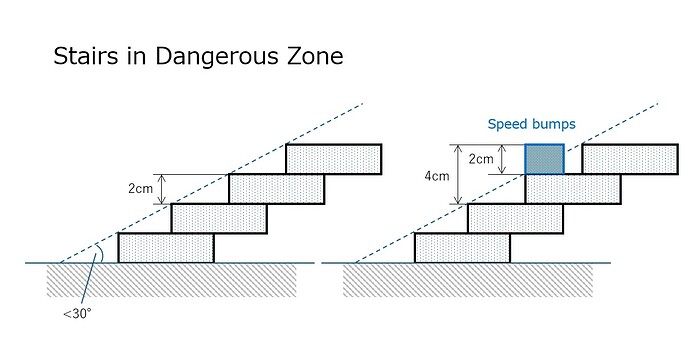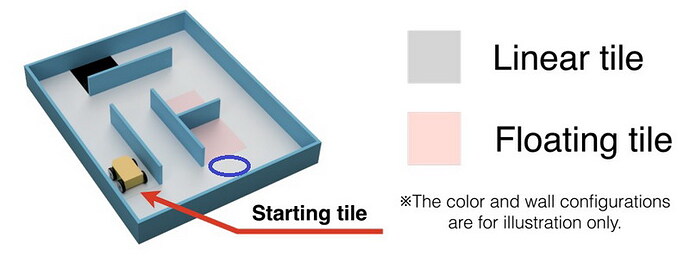Dear RCJ Rescue Line Community,
Before reviewing these changes, please take a look at this other post that discusses the RCJ Rescue rule changes that also applies to RCJ Rescue Maze. Here are the specific Maze changes for the 2025 rules:
RULE CHANGES
C.1) Stairs Usage
Stairs may be used to change the level of the floor, similar to a ramp. The maximum incline angle will be the same as it is today.
C.2) Ramp Design
Ramps must NOT have a drop-off immediately following a rise section, creating a peak-like structure, or vice versa.
C.3) Victim and Exit Bonus Identification
The robot must have one dedicated LED or display for identifying victims, which must be clearly visible to the referee. When reaching the exit bonus, the same LED or display must blink for 10 seconds. This LED or display may not be used for any other purposes. The blink interval must be ~1s (0,5s on - 0,5 sec off).
C.4) Speed Bumps, and Debris Changes
We are making the following changes (only applicable outside the Dangerous Zone):
- Speed bumps are fixed to the floor and have a maximum height of 1 cm.
- Speed bumps are not allowed to be placed on ramps or stairs.
- There is no debris.
C.5) Dangerous Zone
Scenario: Within the labyrinth there can be very difficult and dangerous challenges. Fortunately, the area of such a “danger zone” is marked by a red tile at the entrance. Within the danger zone, the robot may face obstacles, speed bumps, stairs, ramps or debris of extreme difficulty, which can compromise the robot’s coordination and smooth completion of the field. Is it worth sending the robot into such an area, or is it better to play it safe? The choice is yours!
Within the field, certain areas will be designated as Dangerous Zone. The Dangerous Zone is surrounded by walls or black tiles and marked with a red tile at the entrance(s).
The Dangerous Zone is an area considered more challenging than the rest of the field, where the following hazards can be found (in addition to any other elements already on the rest of the field):
- Speed bumps are fixed to the floor and have a maximum height of 2 cm.
- Speed bumps are allowed to be placed on ramps or stairs.
- The debris is not fixed to the floor and has a maximum height of 1 cm.
- The incline of stairs (i.e., the angle of a plate to the horizontal when placed on the stairs) will be less than 30 degrees.
The Dangerous Zone does not block the path for completing the entire map. Therefore, the rest of the field can be completed without entering the Dangerous Zone.
The start position will not be in the Dangerous Zone
Please let us know your feedback as soon as possible as we want to release the official final rules in the upcoming months.
Best,
Diego Garza Rodriguez on behalf of the 2025 RCJ Rescue Committee


